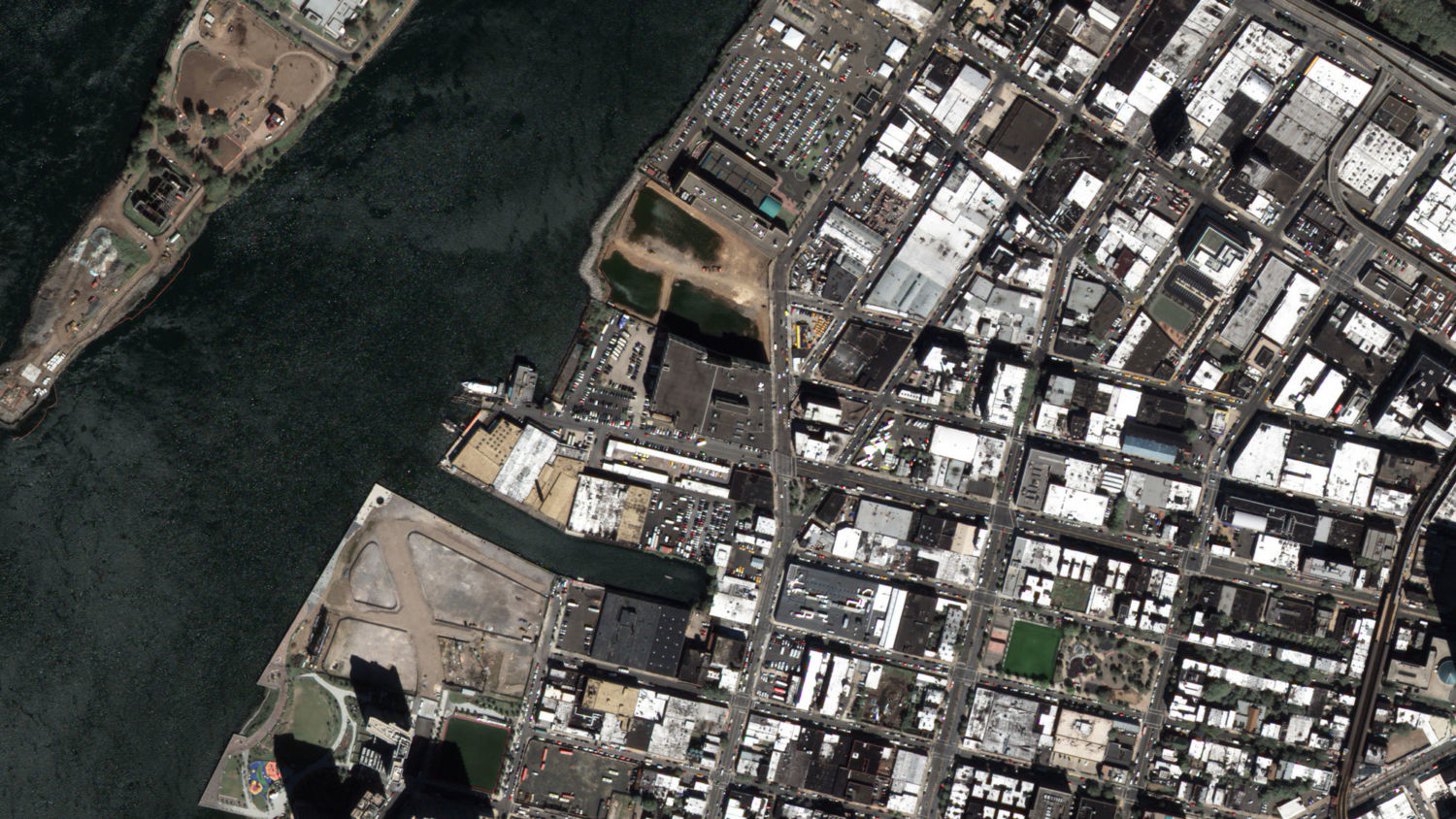ImpactAlpha, June 26 – A decade from now, how will we know if Opportunity Zones actually helped people?
That question is on the minds of community leaders and investors nationwide, from Alabama to the corridors of power in Washington and across the pages of business journals (including ImpactAlpha’s in-depth coverage).
Even if new private investments flow to Opportunity Zones and result in significant positive impact for those communities, if we don’t measure it, we’ll never know for sure. The good news is we already have the tools to measure and analyze the impact of Opportunity Zone investments. For decades, impact and community investors have tried and tested methods for identifying, tracking, and reporting the impact of private sector real estate and business projects.
Tapping artist-innovators as a source of business and social value
That is also why Columbia University, along with Georgetown and Tulane, are bringing together government, foundations, business, and community development experts in a symposium series to discuss impact tracking for Opportunity Zones.* We’ll share what we’ve discussed and our recommendations below. But first, some background on how we got here.
Mobilizing for impact
When the Opportunity Zone incentives became federal law as part of the December 2017 tax reform package, impact tracking requirements were omitted. This differed from the conference report, as well as the original Investing in Opportunity Act, which recommended that the Department of Treasury submit annual outcomes reports to Congress.
One of the original cosponsors of the act, New Jersey Sen. Cory Booker, wrote to the Secretary of Treasury: “If the Treasury Department’s regulations are not thoughtfully and properly designed, the program could be twisted to provide little more than a tax shelter for areas or projects that the legislation was not meant to support.” Booker suggested “guardrails” to prevent abuse. “The Treasury Department should consider developing a rigorous list of positive and measurable community-development outcomes to evaluate Opportunity Funds’ performance.”
Communities across the country haven’t waited. Local priorities have been brought to the forefront of the debate by economic development leaders in Birmingham, Lafayette, and Erie, the mayors involved with Accelerator for America, and the industry-wide U.S. Impact Investing Alliance.
More good news: this public discussion about OZ community impact has gotten federal attention. The Trump Administration established the White House Opportunity and Revitalization Council last December, which was tasked with determining “what data, metrics, and methodologies can be used to measure the effectiveness of public and private investments in urban and economically distressed communities, including qualified opportunity zones.”
New Opportunity Zone rules and tools open the door for investments in local businesses
Four months later, the Department of Housing and Urban Development announced a request for information asking, “How [can HUD] properly evaluate the impact of Opportunity Zones on communities[?]” Then, in early May, Sen. Booker, along with Sens. Scott, Hassan, and Young, introduced a new bipartisan bill that would mandate impact tracking.
We believe that community leaders, business owners, fund managers, and investors all stand to gain from effective impact tracking in Opportunity Zones. Here are three key steps that can help drive collaboration toward such impact tracking, and shared solutions that result in beneficial outcomes for all stakeholders.
1. Get a head start. Instead of starting from scratch, Georgetown’s Beeck Center and the U.S. Impact Investing Alliance provide a starting point that is flexible enough for everyone: the Opportunity Zones Reporting Framework. In addition to helpful guiding principles for effective and equitable Opportunity Zone investment and implementation, the reporting framework provides a common approach with a set of core criteria, while still being adaptable for a wide range of asset classes.
As ImpactAlpha readers know well, the landscape of impact measurement has evolved over the past decade, expanding from a novel idea to a rigorous aspect of sound enterprise management. Impact tracking and analysis now informs program design, organizational management, and business operations in deep and meaningful ways for an array of companies, investors, and funds.
Accordingly, the Opportunity Zone Reporting Framework provides a consistent template for impact tracking, while recommending various evaluation methodologies, including B Impact Assessment, Impact Reporting and Investment Standards (IRIS), and Impact Rate of Return (iRR). We are grateful that Fran Seegull of the U.S. Impact Investing Alliance kicked off our first workshop at Columbia, making the Framework the starting point for our symposium series.
2. Impact tracking must be rigorous, not onerous. At this first workshop, attendees used the Impact Rate of Return approach to simulate impact due diligence on hypothetical investment opportunities. This approach was first described in the book Social Value Investing (by Howard W. Buffett and William B. Eimicke) published by Columbia University Press last year. Using input metrics from IRIS (now, the new IRIS+) in addition to the recently released Shift Impact Appraisal, we tested Impact Rate of Return’s potential efficacy as a process for impact management explicitly for the OZ community.**
The consensus at the Columbia convening was that impact tracking methodologies must be rigorous, not onerous. Striking this balance will be important for policymakers and fund managers. Universities can assist in numerous ways: they can test measures (just as we did in our simulation with iRR), survey communities, build case studies, and analyze data – engaging students in the process all the while, thus educating the next generation in best practices and flaws of Opportunity Zones as this market begins to take shape.
Empowering communities to take ownership of their own Opportunity Zones
Participants agreed that the impact measurement systems recommended by the Opportunity Zones framework should differentiate between those investments in up-and-coming areas that would have happened anyway, and those that are truly attracting new dollars and encouraging additive capital deployment in undercapitalized neighborhoods. As one participant admonished, “Any GP [general partner] who says impact tracking is too much of a burden, they need to leave. This is a massive tax break and they can spend the hour, as we just did, to determine the impact they want to have.”
3. Track value creation over the long-term. As ImpactAlpha reported last week, the Economic Innovation Group submitted a letter to the Department of Treasury on behalf of 70 organizations and Opportunity Zone investors. They wrote: “A holistic approach to measuring economic and social impact is especially appropriate for a policy such as Opportunity Zones, which is designed to change the behavior of investors at scale and improve the functioning of markets in delivering investment capital to distressed communities in general.” We believe that the input metrics put forth by EIG provide a starting point to ensure that this happens.
Investing for impact is built on long-term value. Likewise, the Opportunity Zone marketplace is built on long-term ownership, so it’s critical to apply sound principles of impact measurement from inception. Whether one uses iRR, the B Impact Assessment, IRIS+, the Shift Impact Appraisal, the Impact Multiple of Money, the Impact Management Project’s five dimensions of impact, or any other approach, the key is to determine the ideal methodology for a given set of objectives, and apply it assiduously.
Opportunity funds totaling more than $28 billion have already been announced, with more to come as investors ensure their capital gains from a decade-long bull market benefit from this tax incentive. The natural next step is for Opportunity Zone leaders from all sectors, including the Executive Branch, to take impact tracking seriously and create a clear path towards measurable community benefits for all market participants.
The opportunity cost of doing anything less is far too high.
Howard W. Buffett (@hbuffett) is an associate professor and research scholar at Columbia University’s School of International and Public Affairs.
Robert T. Lalka (@RobLalka) is professor of practice at Tulane University’s A.B. Freeman School of Business and Executive Director of the Albert Lepage Center for Entrepreneurship and Innovation.
Mark M. Newberg (@MarkNewberg) is a project fellow for Opportunity Zones at Georgetown’s Beeck Center, and the president of Stockbridge Advisors.
* We are grateful for all of the organizations represented at our meetings, including the Federal Reserve Bank of New York, the U.S. Impact Investing Alliance, the Economic Innovation Group, the Nonprofit Finance Fund, Mastercard, BRIDGE Housing, the Global Impact Investing Network, Shift Capital, BlackRock, Blackstone, Robin Hood, the Kresge Foundation, Enterprise Community Investment, Inc., the Ford Foundation, Pace University, New York University, and others.
** The specific workshop scenario was based on affordable housing investments, and the working group explored numerous input metrics in categories including: Community Characteristics (such as percentage of people in poverty, income inequality, cost and housing density burdens, median household income, etc.); Site Location Characteristics (such as availability of health and social services, and access to fresh food, early childhood education, mass transit, etc.); Community Engagement (such as the use of planning committees, level of community support, alignment with needs assessments, etc.); Design Characteristics (such as affordability, rent regulation, security, etc.); Construction and Sourcing (such as diversity in contractors and suppliers, local sourcing, etc.); Management Track Record (such as number of housing violations, speed to remedy, eviction rate, etc.); Investor Exit Strategy; and a set of Ongoing Housing Development Performance Indicators.











